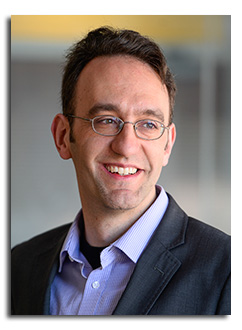
Abstract
Intermediate band (IB) materials are a novel class of materials that, like semiconductors, have a band gap but also have an extra set of allowed electronic levels entirely contained within the semiconductor band gap, allowing sub-gap photon absorption. Solar cells made from such materials have the potential to radically improve photovoltaic efficiencies, similar to triple-junction cells. IB materials are also being explored for use as infrared photodetectors. Current IB devices are made from three classes of materials: quantum dots, highly-mismatched alloys, and hyperdoped semiconductors, but none has simultaneously achieved high sub-gap absorption and sufficient carrier lifetime.
I will describe theoretical and experimental work to understand the material requirements for efficient IB solar cells. I will introduce a simple figure of merit that predicts the potential effectiveness of candidate IB materials for both photodetectors and solar cells in advance of device fabrication. This figure of merit captures the tradeoff between enhanced absorption and enhanced recombination within an IB material, and it suggests a path toward efficient IB materials. I will give examples of promising IB material systems and of measurements and predictions of the figure of merit.
Click here to see all available video seminars.
Click here to go to the SPREE HOMEPAGE.
Brief Bio
Jacob Krich is an Associate Professor at the University of Ottawa in the Department of Physics and the School of Electrical Engineering and Computer Science and a Senior Visiting Fellow at the University of New South Wales. He received his PhD in Physics from Harvard University in 2009, where he was a Hertz Foundation Fellow. He was a Ziff Environmental Fellow of the Harvard University Center for the Environment from 2009-2011, and a postdoctoral fellow of the Harvard Department of Chemistry and Chemical Biology from 2011-2012. He has a Masters degree in mathematics from the University of Oxford, where he was a Rhodes Scholar, and a BA in Physics from Swarthmore College in Pennsylvania.
Professor Krich is a theoretical condensed matter physicist focused on understanding novel materials for photovoltaic applications, including solar energy and photodetectors. He also works to understand energy transport in photosynthetic systems and ultrafast nonlinear spectroscopy. He has made fundamental contributions to a range of fields, including the understanding and development of new intermediate band materials.
